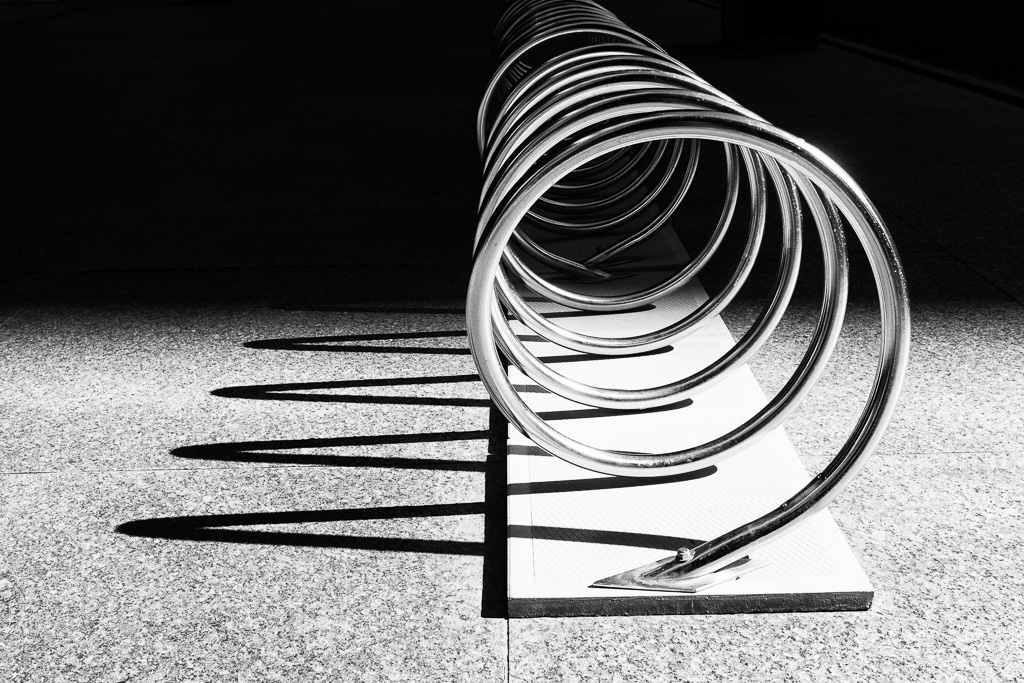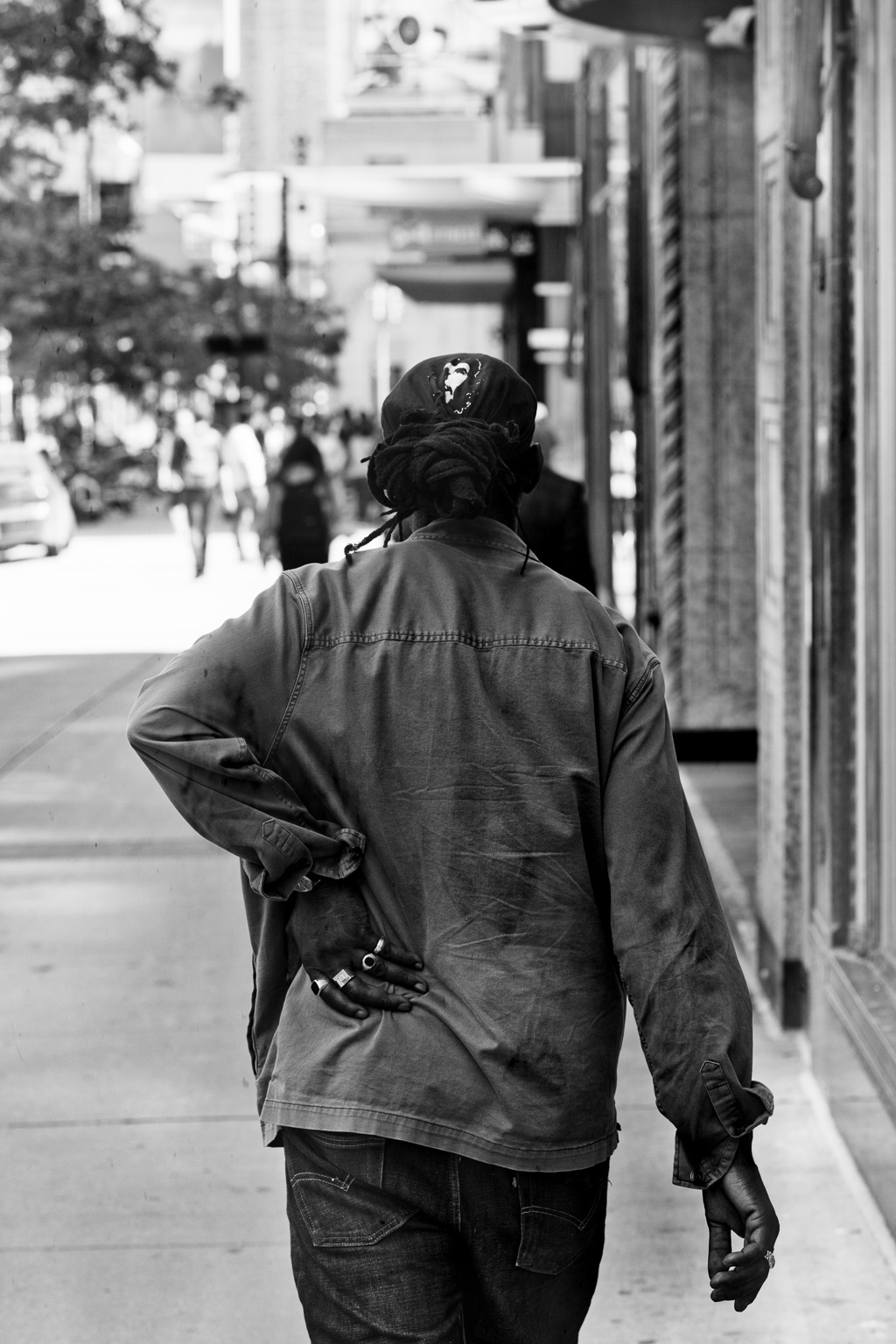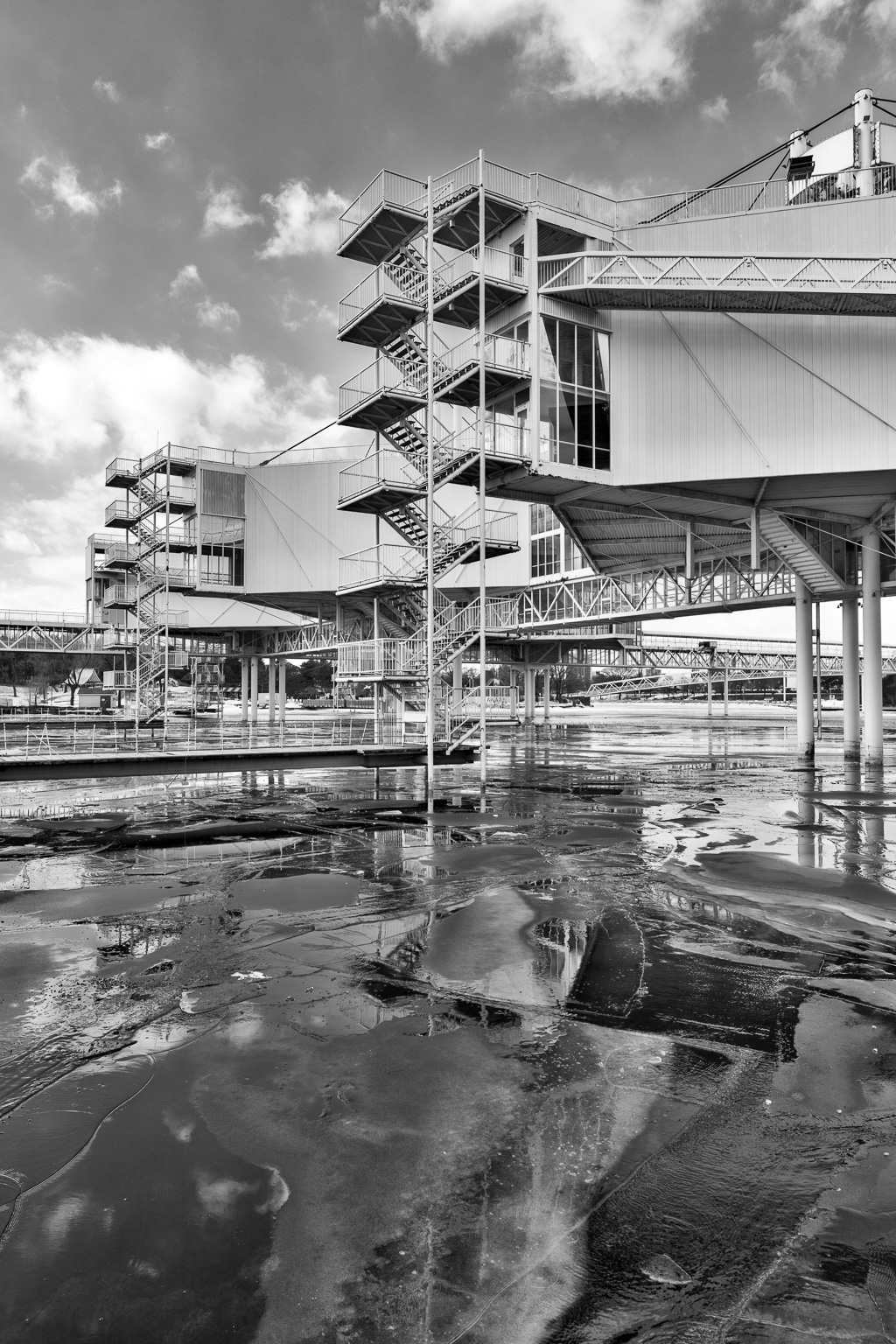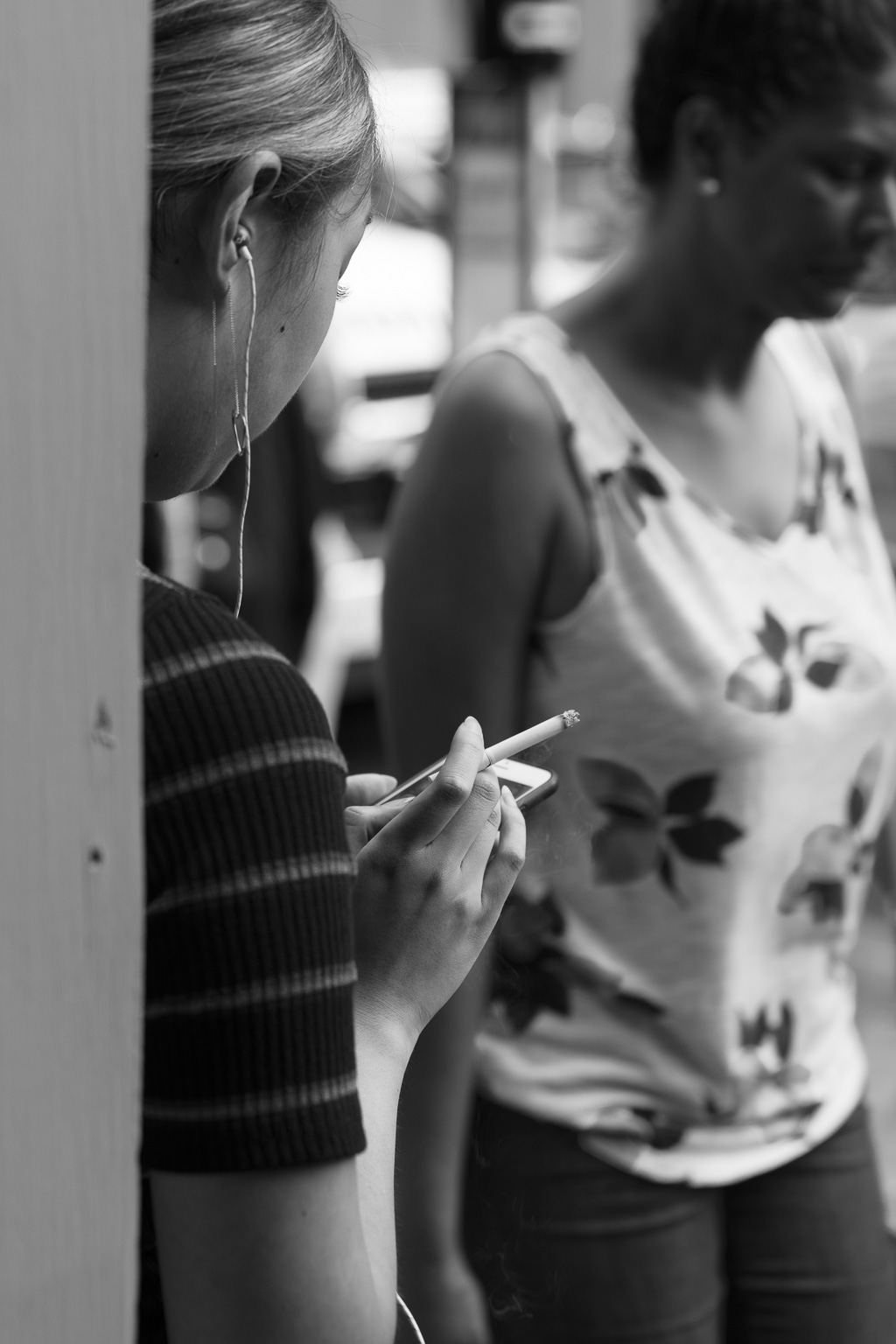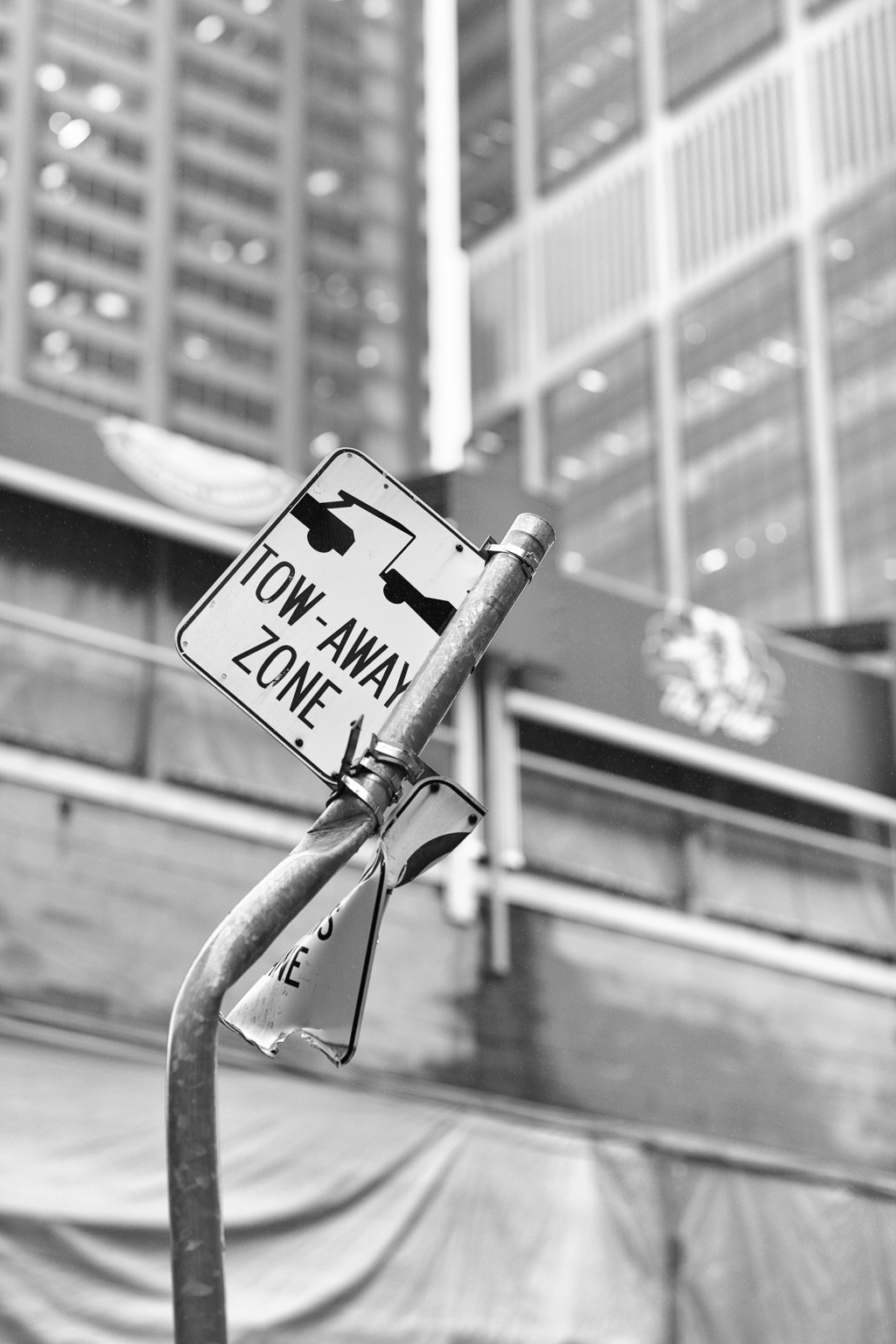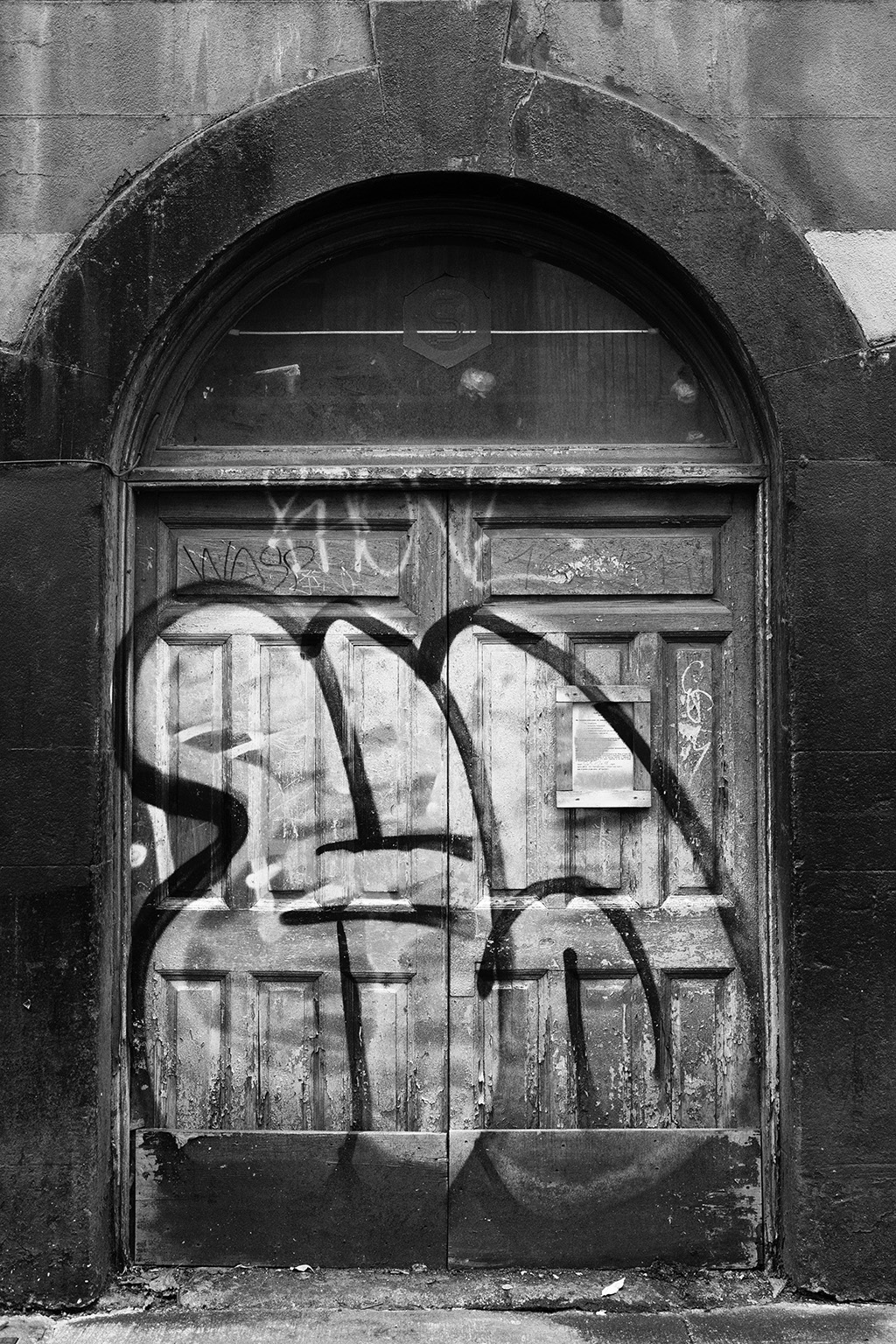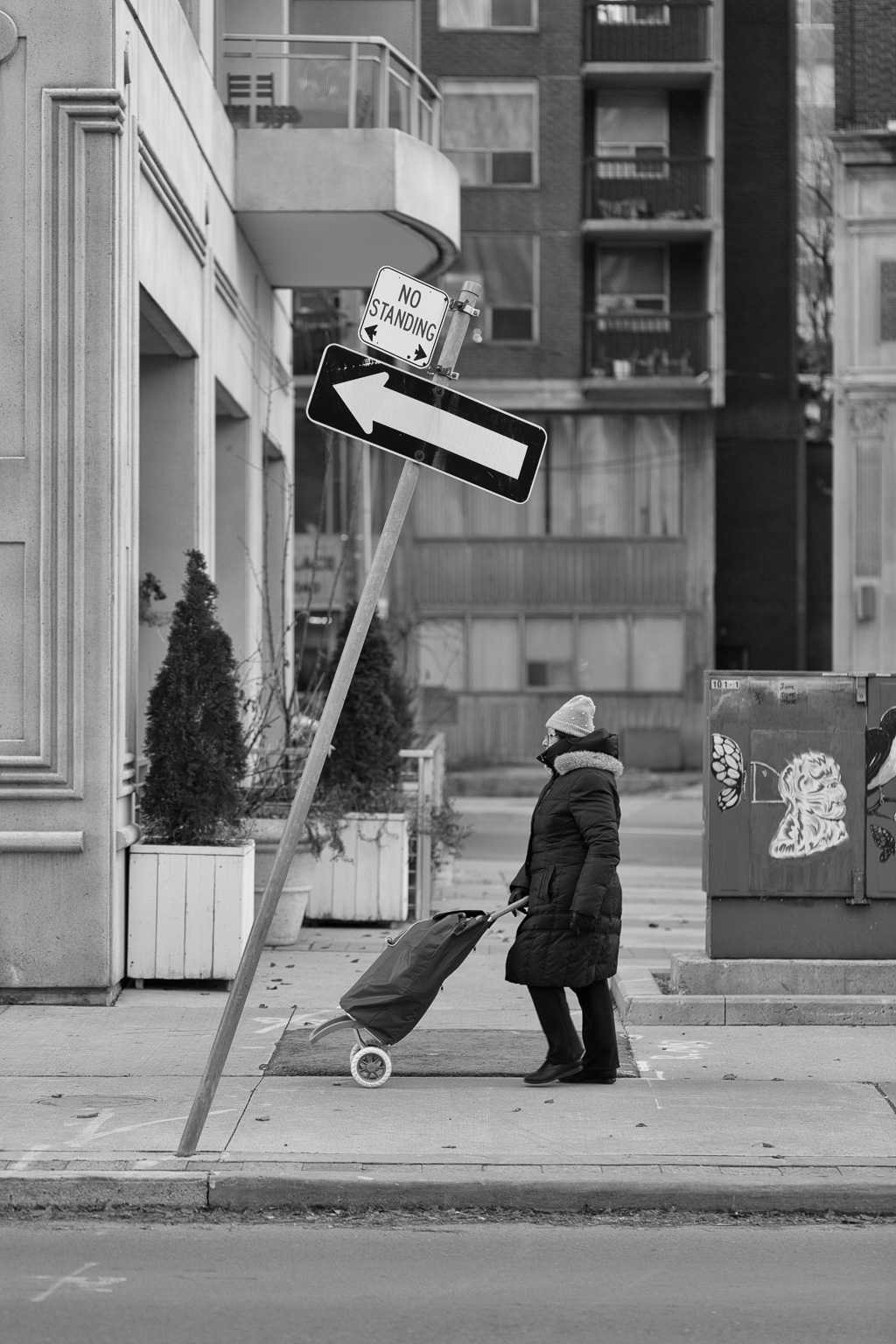Pride events offer the perfect opportunity to shoot street portraits. This is especially true on overcast days when shadows are soft and natural sunlight is kind to photographers. But the enemy here is not light so much as time. Interactions are so fleeting that you may have only a second to make a connection and take the shot. Everything has an ADHD vibe to it. Catch someone’s eye; raise the camera as if to ask “mind if I take a shot”; get the nod; frame the shot; click; move on to the next person.
This year, there was only one person who declined to pose. That’s exceptional. Most years, the number is zero. In the fenced-off portions of Church Street, consent is assumed, although that consent is given to Pride Toronto and not to the thousands of unofficial photographers roaming at large. The release notice says that “you consent to the use of your image” etc. for eternity. That strikes me as optimistic. Eternity is a long time. A lot can happen between now and eternity.
For example, on some views of inflationary cosmology, the universe expands forever and the distribution of energy within an infinite universe means that the average temperature approaches absolute zero. In other words, eventually it will become too cold to care about the rights we’ve assigned to Pride Toronto.
But there are other issues to consider before it ever gets to that. For example, after about 5 billion years, our sun will become a red giant, expanding well beyond Earth’s orbit, which means that our home planet will be consumed in a great ball of Jerry Lee Lewis. In that scenario, assuming our genetic progeny still exists but hasn’t figured out how to migrate elsewhere, it will become too hot to care about the rights we’ve assigned to Pride Toronto.
Somewhere between hot and cold, there is a lukewarm position occupied by smaller stars that consume their fuel more sparingly. Although the universe is too young for us to gauge the potential lifespan of such a star, it is plausible to suppose it could continue to burn for hundreds of billions, perhaps even trillions, of years. Assuming we escape our solar death trap and migrate to one of these smaller stars, we could carry on for a long time. But somehow I think that, after evolving for the next trillion years, we might grow bored of staring at old photos of pride events from those early days when we’d barely learned to walk upright.



